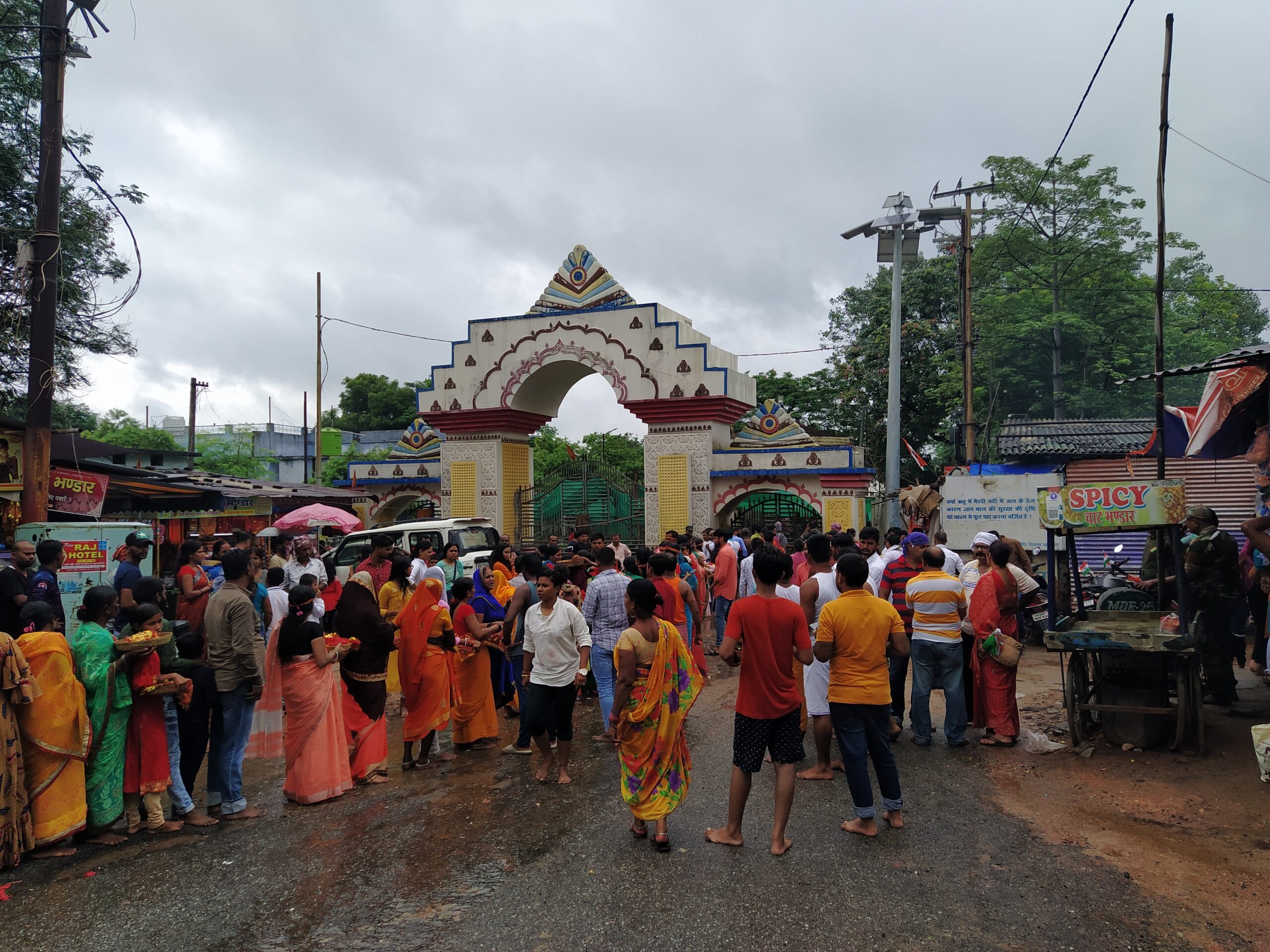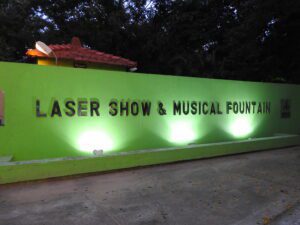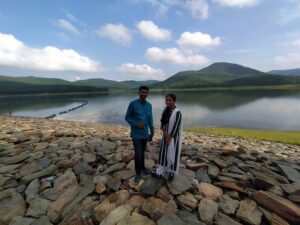Rajrappa Mandir Jharkhand Chhinnamasta Temple
Rajrappa Mandir Jharkhand Chhinnamasta Temple: In today’s article we will learn about the famous Rajrappa temple in Ramgarh, Jharkhand. This unique temple is located at the confluence of the Bhairavi and Damodar rivers and is dedicated to Maa Chhinnamastika (चिंमस्तिका). The form of the goddess is very attractive, her head is cut off and she is holding it in her right hand, and three streams of blood are flowing from her neck. Her servants consume two of these streams, while the third stream is drunk by her herself.
Who is Maa Chhinnamastika (चिंमस्तिका)? What is her story and why did she cut off her head? What are the mysteries surrounding this temple and why is it such an important pilgrimage site? You will get the answers to all these questions in this article, so don’t forget to read till the end.
History of Rajrappa
About 80 km from Ranchi, the capital of Jharkhand, is the temple of Maa Chhinnamastike, which is known as Rajrappa Temple. This temple is situated as a heritage of faith at the confluence of the Bhairavi and Damodar rivers. After the Kamakhya temple of Assam, it is considered to be the second largest Shaktipeeth in the world.

According to the local people, in ancient times this area was ruled by a king named Raj and his wife Rupama. The place was named Rajrupama after both of them, which later became famous as Rajrappa. According to the story, once on the night of the full moon, the king reached the confluence of the Bhairavi and Damodar rivers in search of hunting. During the night’s rest there, the king saw a girl in his dream, who was wearing red clothes and her face was radiant.
The girl said to the king, “O King, your life seems desolate due to not having a child. If you obey me, your queen’s lap will be filled.”
Waking up from the dream, the king started searching for the girl, and suddenly his eyes fell on the same girl who had appeared from within the water. Her appearance was supernatural, seeing which the king got frightened.
The girl said, “O King, I am Chinnamastika Devi. The people of Kaliyug do not know me, whereas I have been living secretly in this forest since ancient times. I give you a boon that exactly nine months from today you will get a son.”
The goddess further said, “Near the meeting place you will see a temple of mine, in which my idol will be engraved on a rock. You worship me every morning.” Saying this, Chinnamastika Devi disappeared. After this, the king and his queen started worshipping there every morning, and they got a son. They built a grand temple of Maa Chinnamastika there, which came to be known as Rajrappa after the name of the king and the queen.
The idol of Maa Chhinnamastika installed in the temple holds her severed head in her hands and blood is flowing from her neck into the mouths of the assistants standing on either side.
Rajarappa is a major Hindu pilgrimage center, attracting about 2,500-3,000 devotees daily. The main attraction here is the headless idol of Goddess Chhinnamastika, which is worshipped with devotion.
About Chinnamastika Devi:
Now that we know the story of the history of Rajrappa temple, let us now move towards the legend of Maa Chhinnamasta Devi, who is a form of Maa Parvati. Maa Chhinnamasta, also known as Prachanda Chandika, is one of the ten Mahavidyas. Her appearance is extremely strange and mysterious, as we told earlier. So, let us know about the origin of this form of her.
According to the legend, once Maa Parvati was taking a bath and meditation in the Mandakini river along with her assistant goddesses, Dakini and Varani. At the same time, her companions felt intense hunger, which made their faces pale. When they did not find anything to eat, they pleaded with the Goddess to arrange food for them. Hearing the demand of the companions, Maa Parvati said, “O friends! You have some patience, your food will be arranged after the bath.”
However, distraught with the pangs of hunger, both the friends started demanding food immediately. On this, Mother Bhagwati cut off her head with her sword. Immediately her severed head fell into her left hand, and three streams of blood came out from her neck. Her companions started consuming food from two streams, while Mother herself started drinking blood from the third stream. With this incident, Mother Chhinnamasta Devi was born.
With this incident, the form of Mother Chhinnamasta became extremely fierce and terrifying. Seeing this fierce form of her, Lord Shiva took the form of Kabandha to calm her fierce form. Kabandha means torso without a head. Lord Shiva appeared in this form only as a torso without a head. This form of Shiva, as always, calmed and balanced the fierce energy of Mother Chhinnamasta.
Story of Rajrappa Mandir as a Shakti Peeth:
Rajrappa Mandir is renowned as the second-largest Shakti Peeth in the world, following the Kamakhya Temple in Assam. According to the Shiva Purana, it is believed that the severed head of Shiva’s first wife, Sati, fell at this site, making it a place of great spiritual significance. Every year, many devotees visit Rajrappa during Amavasya to perfect their Tantric practices.
How to Reach Rajrappa Temple:
The nearest railway station to Rajrappa is Chinpur Railway Station, from where you can book a taxi or cab to reach the temple. If you are traveling by flight, the nearest airport is Ranchi (IXR). From Ranchi, you can take a cab to reach Rajrappa Mandir.
Nearest Places to Rajrappa Mandir:
Rajrappa is not just a pilgrimage site; it has also become a popular tourist destination. You can explore the scenic beauty of Patratu Valley, Chandil Dam, Burudi Dam, Hundru Waterfall, and Sikidri Valley.
The Symbolism of Shiva’s Kabandha Form:
- Shiva’s Kabandha form represents the complete renunciation of ego. The head symbolizes ego and selfishness. When Shiva appears in the Kabandha form, it symbolically aligns with Mata Chinnamasta’s embodiment of sacrifice and devotion.
- This form of Shiva calmed Mata Chinnamasta’s fierce energy through the symbolic destruction of ego and surrender.
Related Article: Lepchajagat Tour Plan From Darjeeling 2024







